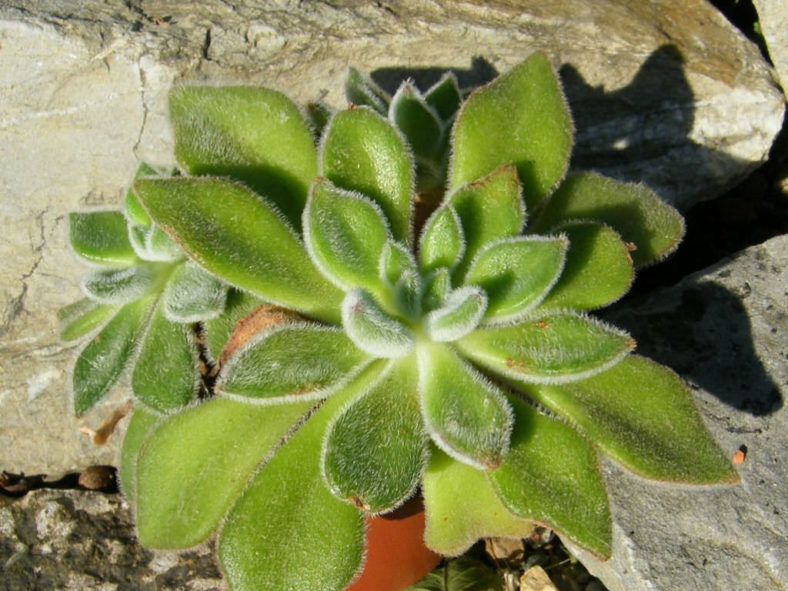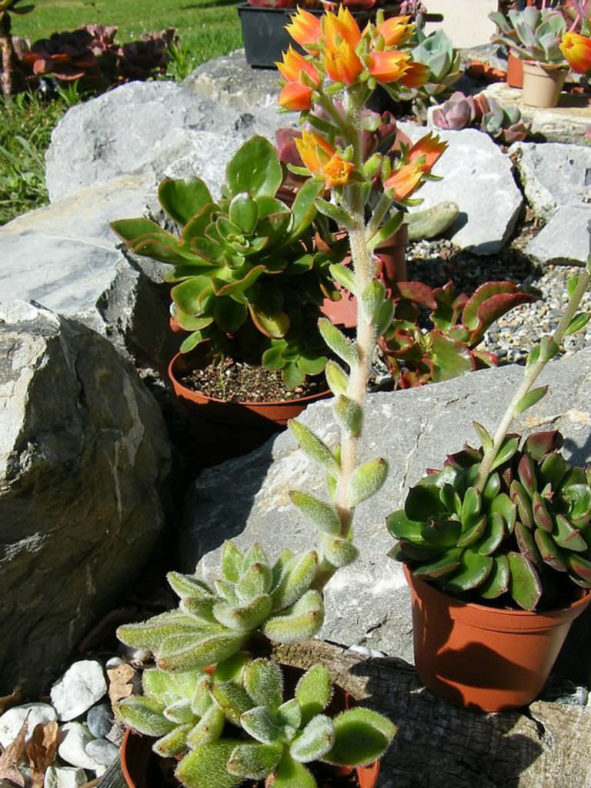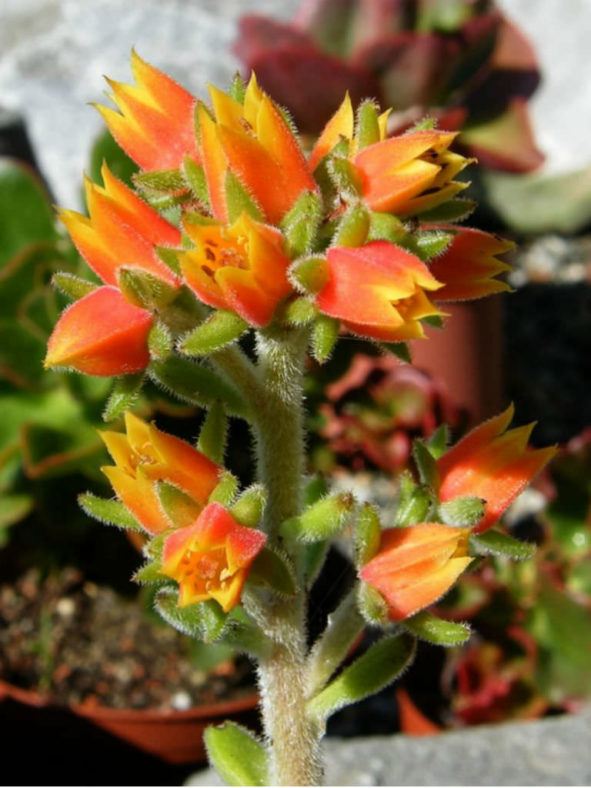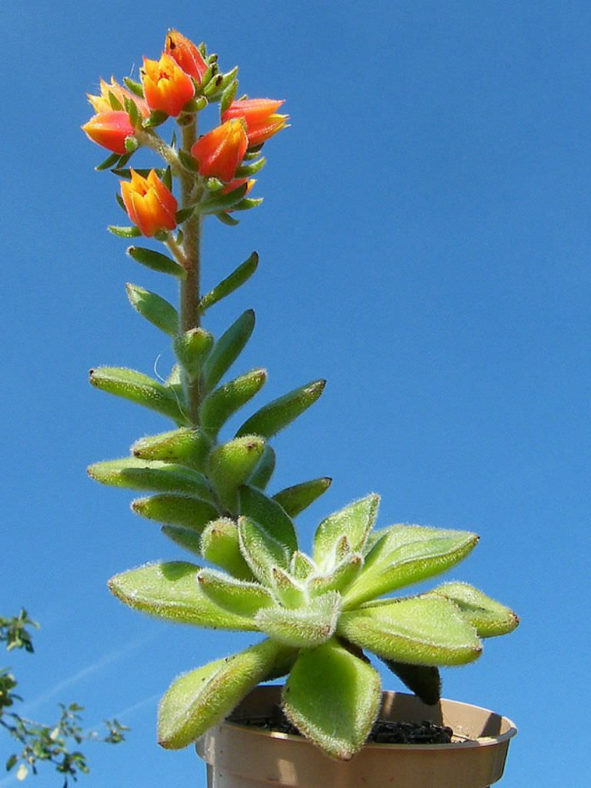Scientific Name
Echeveria pilosa J.A.Purpus
Synonym(s)
Euphorbia septemsulcata
Scientific Classification
Family: Crassulaceae
Subfamily: Sempervivoideae
Tribe: Sedeae
Genus: Echeveria
Etymology
The specific epithet "pilosa (pronounced pil-OH-suh)" means "hairy, shaggy" and refers to the hairy appearance of the plant.
Origin
Echeveria pilosa is native to Mexico.
Description
Echeveria pilosa is a beautiful succulent that forms rosettes of green leaves that turn reddish at the tips when exposed to full sun. The stems are erect, simple or rarely branched, and can grow up to 3.2 inches (8 cm) tall. All parts of the plant except the inside of the flowers are covered with fine, white hairs.
The flowers are bell-shaped, orange-red with a yellow tip, and usually appear in summer at the end of leafy flower stalks that can grow up to 1 foot (30 cm) tall.
Echeveria pilosa is similar in appearance to Echeveria coccinea, but it has shorter stems and a branched cluster of flowers.

How to Grow and Care for Echeveria pilosa
Soil: Echeverias need a potting soil mix that drains quickly. Many growers will create their own mix. However, commercial cactus and succulent potting soil will work fine.
Light: These succulents prefer full sun to partial shade. However, avoid drastic sunlight changes and full afternoon sun, especially in the summer. During the winter, when your succulents are inside, put them near the brightest window in your home.
Hardiness: Echeveria pilosa can withstand temperatures as low as 25 to 50 °F (-3.9 to 10 °C), USDA hardiness zones 9b to 11b.
Watering: When and how to water is crucial to Echeveria care. They do not like to be kept too wet, but they also do not like to be kept too dry. Therefore, the "soak and dry" method is the preferred schedule for watering Echeverias.
Fertilizing: Echeverias grow well without fertilizer but may benefit from the extra nutrients.
Repotting: Repot when needed in the spring or early summer.
Propagation: Echeverias are one of the easiest succulents to propagate. They are usually propagated from offsets or leaves but can also be grown from stem cuttings and seeds.
Learn more at How to Grow and Care for Echeveria.
Toxicity of Echeveria pilosa
Echeverias are safe around pets and humans, although it is not advisable to eat them.
Links
- Back to genus Echeveria
- Succupedia: Browse succulents by Scientific Name, Common Name, Genus, Family, USDA Hardiness Zone, Origin, or cacti by Genus
Photo Gallery
Click on a photo to see a larger version.


